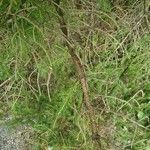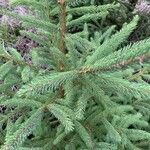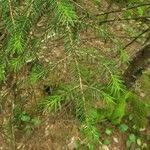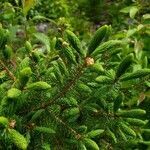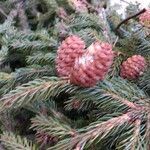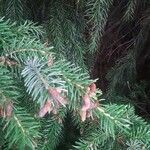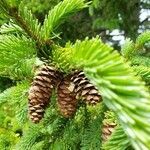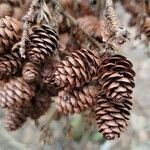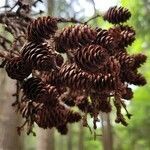A medium sized tree. It grows to 25 m high. The trunk is 60 cm across. The crown is a rather open cone shape. The bark is reddish-brown and separated into darker scales or plates with age. The branches slope downwards with the tips turned upwards. The leaves are single and curved and 10-16 mm long. They are shiny yellowish green. The tip is blunt. The needles point forward often pressed close to the twig. The cones are oval and 3-5 cm long. They are chocolate brown. The taper to a very short stalk. They scales are stiff and have light lines over them. The cones open with widely spread scales. These are easily separated from the axis.
Trees to 40m; trunk to diam.; crown narrowly conic. Bark gray-brown to reddish brown. Branches horizontally spreading; twigs not pendent, rather stout, yellow-brown, densely pubescent to glabrate. Buds reddish brown, 5--8mm, apex acute. Leaves 0.8--2.5(--3)cm, 4-angled in cross section, somewhat flexuous, yellow-green to dark green, not glaucous, bearing stomates on all surfaces, apex mostly acute to sharp-pointed. Seed cones 2.3--4.5(--5)cm; scales broadly fan-shaped, broadest near apex, 8--12 ´ 8--12mm, stiff, margin at apex entire to irregularly toothed. 2 n =24.
